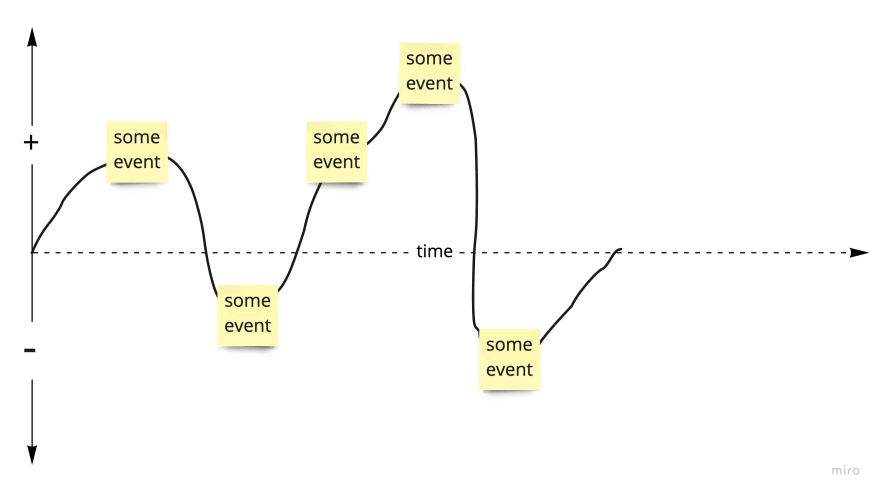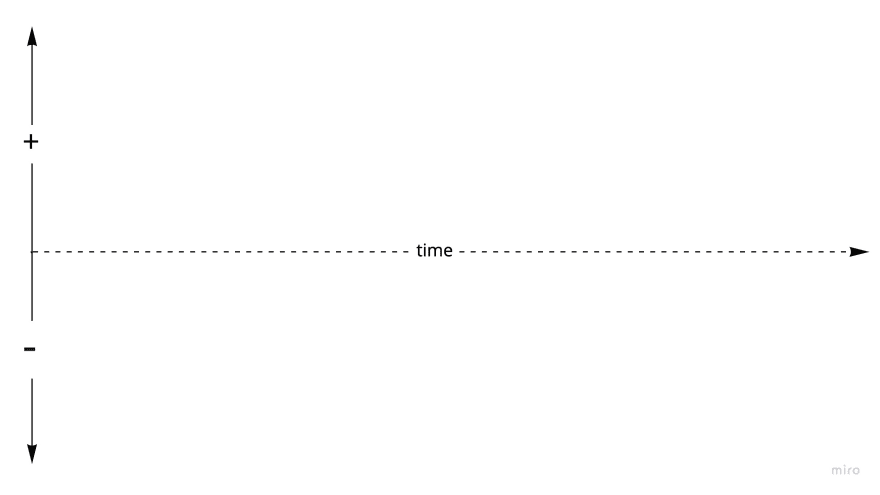I recently did Journey Lines from Lyssa Adkins with a team remotely using Miro and will introduce you to the exercise. The team, consisting of 5 people, worked together for some time when I joined. As far as I knew and figured out: They never did a team building exercise. So we did one.
During my professional life and as working student I rarely experienced a team building exercise specifically for a single team. Exercises that happened included the full company or multiple teams. Why should you bother with team building at all? Although this might depend on your company's culture - The feedback from the team sums this up, this is why:
Such a cool exercise. We learned so much about each other in such a short time.
Even a team working together since multiple months learned new things about each other!
Part of communication trainings or related studies are usually Tuckman's stages of group development (forming, storming, norming and performing), also known as "team clock". I can guess or interpret why team building is not systematically applied: Time, not deemed worth the trouble or benefit, no systematic approach or others. Not everything needs to be systematically done or applied by the book, however models were invented for reasons (I hope so). My suggestion: Especially during remote times you should bother with team building and also afterwards.
Journey Lines is explained by Lyssa Adkins in her book Coaching Agile Teams. I found the exercise very useful and in this article you find how I did it and what timeboxes were used.
Let's do it, this is how it looks:

How to
1. Introduce the exercise
Introduce why you're doing this and the concept of Journey Lines, by means of an example image e.g. see above.
You're doing this to improve collaboration by kickstarting your team to progress faster through Tuckman's stages of group development. Collaboration is improved by fostering trust. If I don't know anything about you: How or in what regard should I support or why should I help you? Thus bring people together.
In this exercise participants will present their life's journey. Invite to share not only working lives, but also personal aspects, since both influence each other (work-life balance). Participants will place events on a line, when the line goes up, the event was pleasant, if it goes down unpleasant.
Now kickstart your exercise with the next step!
2. Present your own Journey Line (8 min + ~3 min, optional)
As a facilitator you can prepare your own Journey Line beforehand and present it, before anyone else creates theirs. This way you set a safe space, open up participants to share more of their lives and give an example about how this works, a first "test run" so to speak. This step is optional and consists of steps 4 and 5, read them for guidance.
3. Create personal Journey Line (10 min)
Ask participants to create their Journey Line. There are multiple approaches: First start by writing Post-its, arrange them on the diagram and draw a line to connect all. Second start by drawing the line and then add Post-its. I prefer the Post-its first approach. This gives you more flexibility, you don't have to redraw the line when you forgot something or re-weight events. Either prepare diagrams beforehand or let participants draw.
Remind to mix personal and private life, both influence each other and are part of the whole life.
You haven't done step 2 and plan to connect with the participants? Then you as a facilitator should also create one ;).
4. Everyone presents their Journey Line (8 min/participant)
Presentation time, grab popcorn! One participant presents their Journey Line, others listen and note down anything sticking out: Skills that matter for the project, interesting or useful talents, experiences or values making the presenter who they are.
5. Present things that stood out (~3 min)
Participants briefly state what stood out and put it on the presenter's Journey Line. This step can turn into an extensive conversation, either increase the timebox or remind to make precise and short observation statements. My recommendation: Do a mixture of both, or follow up on the Journey Line with another format to enable intense exchange.
This step can generate e.g:
- Cool I also studied there
- Has background x, this is valuable for our topic y (metrics, * cookies, adaptive frontend …)
- You got back up again every time you fell.
- You never compromised in any of your decisions.
The next person presents their Journey Line, back to step 4. Repeat until you run out of participants or popcorn.
6. What do you take with you? (5 min)
I ask the above, because I am interested in takeaways or patterns. Participants have 1 minute time to write down their thoughts, afterwards they put them up on a board with a brief explanation.
The last Journey Line exercise I did generated:
It seems like we all grew a lot when something unexpected happened
Really awesome to learn everyone's previous work experience
Final words
Awesome and easy exercise - the feedback I got from the team sums it up. May your "Journey Line" continue. Thank you Lyssa Adkins for creating this!







Top comments (0)